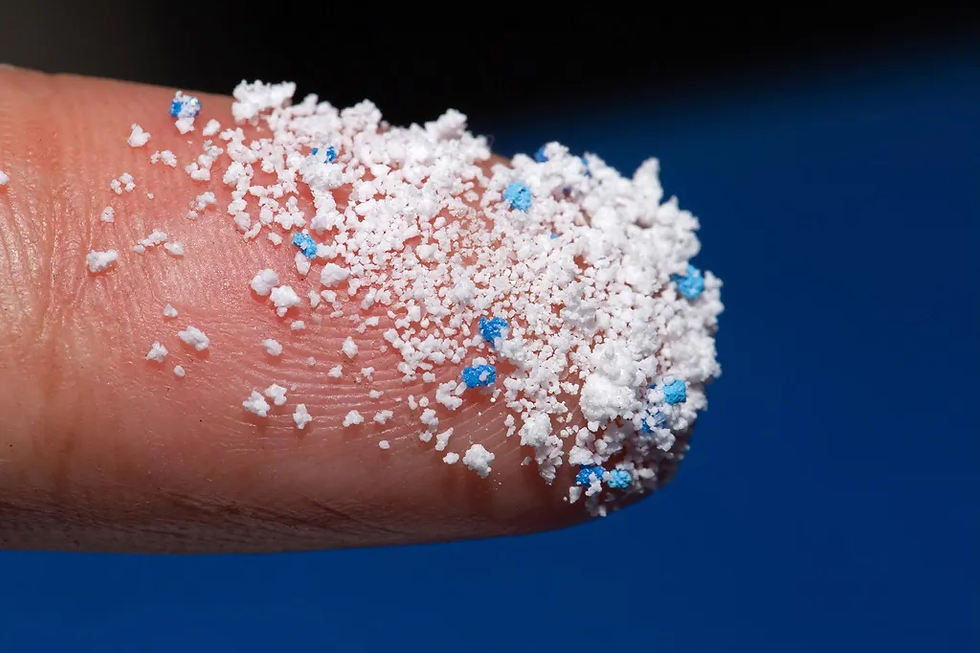The Bigger Threat of Microplastics
- Jisun Hwang
- Jul 17, 2022
- 2 min read
Updated: Jul 18, 2022

Microplastics are the tiny plastic particles that form as a result of the larger items being broken down, and also manufactured for certain industrial purposes. British marine biologist Richard Thompson coined the term “microplastics” in 2004 to define tiny plastic particles of less than 5 mm in length after these were discovered on English beaches. Many of them are too small to even be detected by the naked eye.

And because plastic itself is so omnipresent, these tiny particles have also found their way to unimaginable places—from the bodies of marine organisms to Arctic and Antarctic snow, and from the deepest reaches of oceans to the human bloodstream, making microplastics a threat of grave magnitude.
In fact, much of the plastic that ends up in the environment does so into the seas, and in turn, these particles are ingested by plankton, bivalves, fish and even whales, who mistake them with food. A 2016 report by the United Nations Food and Agriculture Organization reported the presence of microplastics in up to 800 species of fish, crustaceans and molluscs.
Furthermore, earlier this year, a group of scientists from the Netherlands found these microplastic particles in the human bloodstream. They collected samples from 22 healthy individuals, 17 of whom had quantifiable amounts of plastic particles in their blood. Although the direct impact of microplastics on human health is presently unclear, the researchers have been quoted as saying that the particles are transported throughout the body and they can also cause chronic inflammation.
Dr. Anu Pavithran V, an independent researcher marine biologist, who is currently examining the hormonal impact of microplastics in people in collaboration with the Indian Institute of Science (IISc), Bengaluru, advised that microplastics might affect humans indirectly by means of added metals, especially heavy metals. “When heavy metals bind with the surface of these microplastic particles, they end up impacting humans more,” she said. Although we are not entirely certain, some hormonal impact has been detected in some studies, she added. What is more concerning is that these have also been found in the lungs, kidneys, spleen, and even the placenta, which supplies oxygen and nutrition to the foetus. Dr Anu shared that the research is ongoing.
Studies involving humans have primarily relied on lab experiments, such as those carried out on mice or exposing human tissues to the pollutant. For instance, a 2019 study showed mice suffered from inflammation when they consumed microplastics. Others found a low sperm count in them, suggesting an effect on their reproduction. In addition, some in-vitro researches on human cells and tissues also displayed toxicity.
So which one is more contaminating, plastic or microplastic? “It is definitely the latter,” Dr Anu said, explaining that “since these are so tiny, they get transported anywhere, to the marine environment and the human bloodstream.”



Comments